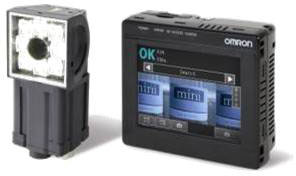 Just about every item you find on a store shelf has some kind of code printed, stamped, or burned into the packaging. Whether it's simply the product’s part number or a complex string of date and lot codes, verification of these codes is critical. These codes can be used to track products through the consumer marketplace making consumer support, such as recalling allergy medicine, much easier and more accurately to accomplish. Missing or incorrect information would render the entire coding process useless. In the past, random samples of coded products were inspected by hand. This can be a cost effective solution when it is not necessary to inspect each item coming off the manufacturing line or when quantities are low. In the case of food or medicine, however, 100% inspection is becoming required more often than not and on a high-speed manufacturing line, hand inspection is useless. This is when automatic verification of the codes really stands out.
Just about every item you find on a store shelf has some kind of code printed, stamped, or burned into the packaging. Whether it's simply the product’s part number or a complex string of date and lot codes, verification of these codes is critical. These codes can be used to track products through the consumer marketplace making consumer support, such as recalling allergy medicine, much easier and more accurately to accomplish. Missing or incorrect information would render the entire coding process useless. In the past, random samples of coded products were inspected by hand. This can be a cost effective solution when it is not necessary to inspect each item coming off the manufacturing line or when quantities are low. In the case of food or medicine, however, 100% inspection is becoming required more often than not and on a high-speed manufacturing line, hand inspection is useless. This is when automatic verification of the codes really stands out.
High-end vision inspection systems typically use cameras and have high-resolution B&W or color image capture capabilities. These systems are usually wide open in the sense that they can be programmed to do many different simultaneous inspections and calculations while maintaining high throughput speeds. Not every application may require a full camera based solution, but could be solved using a lower-cost yet high-function smart sensor.
A relative newcomer to the vision inspection game is the smart sensor. Some look and function like a full-blown camera system, but carry a much smaller price tag while still offering many of the key features of the high-end system. Inspecting a date or lot code in a high-speed manufacturing line can be accomplished with a vision sensor as long as the data being verified does not change often. High-end systems can be linked to PLCs through network communications to gather expected data on the fly where a simpler vision sensor would require user input to teach the new expected code. If this will work for your application seeing a cost savings of $2k+ over a full-blown vision system, smart sensors offer a lot of capabilities for the right price.
For more information on automating your vision inspection application, please fill out the contact form and we will have one of our vision specialists contact you.